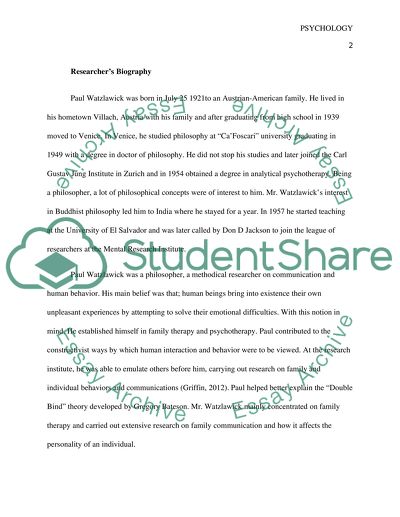Cite this document
(“Theoretical Perspectives of Constructivist Paul Watzlawick (19212007) Research Paper”, n.d.)
Theoretical Perspectives of Constructivist Paul Watzlawick (19212007) Research Paper. Retrieved from https://studentshare.org/psychology/1641020-theoretical-perspectives-of-constructivist-paul-watzlawick-19212007
Theoretical Perspectives of Constructivist Paul Watzlawick (19212007) Research Paper. Retrieved from https://studentshare.org/psychology/1641020-theoretical-perspectives-of-constructivist-paul-watzlawick-19212007
(Theoretical Perspectives of Constructivist Paul Watzlawick (19212007) Research Paper)
Theoretical Perspectives of Constructivist Paul Watzlawick (19212007) Research Paper. https://studentshare.org/psychology/1641020-theoretical-perspectives-of-constructivist-paul-watzlawick-19212007.
Theoretical Perspectives of Constructivist Paul Watzlawick (19212007) Research Paper. https://studentshare.org/psychology/1641020-theoretical-perspectives-of-constructivist-paul-watzlawick-19212007.
“Theoretical Perspectives of Constructivist Paul Watzlawick (19212007) Research Paper”, n.d. https://studentshare.org/psychology/1641020-theoretical-perspectives-of-constructivist-paul-watzlawick-19212007.


